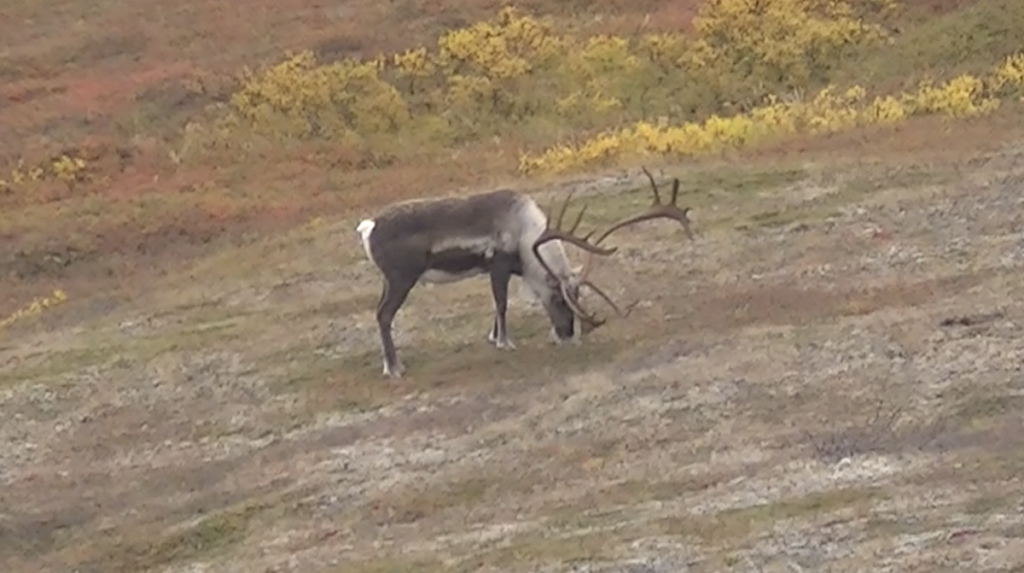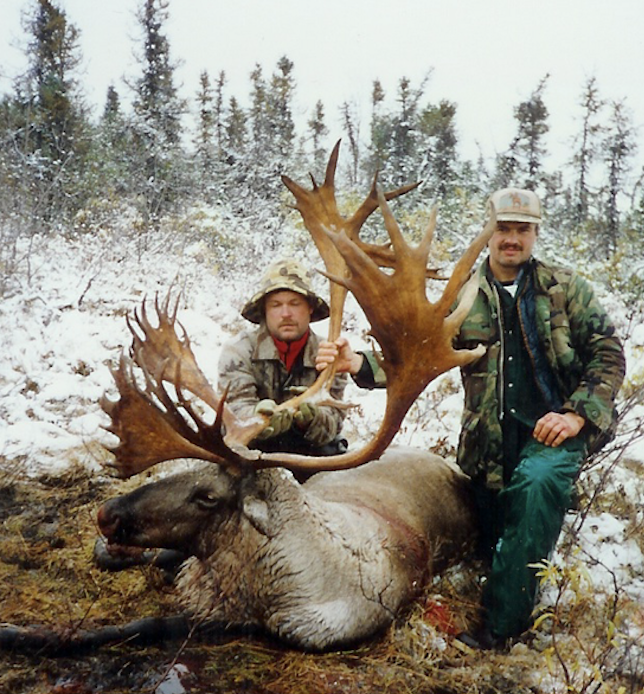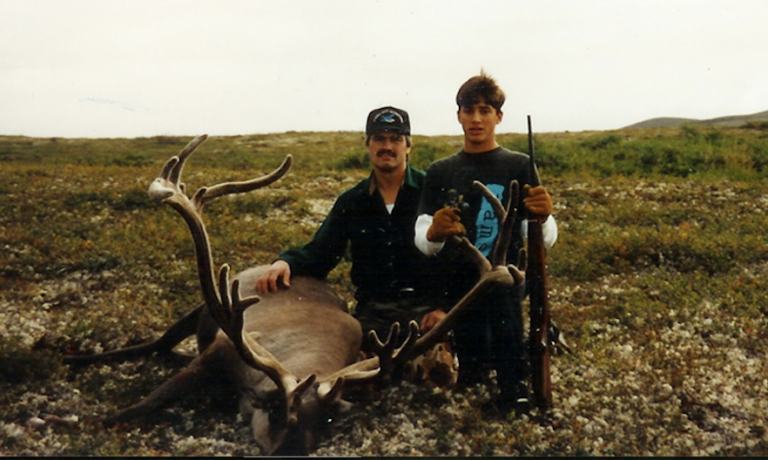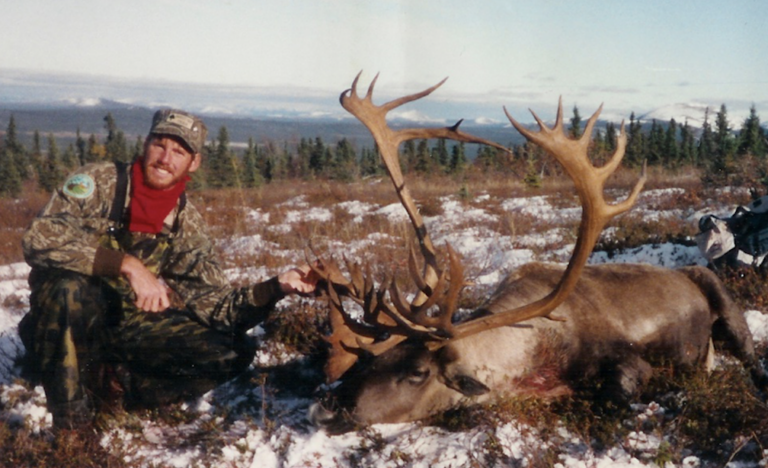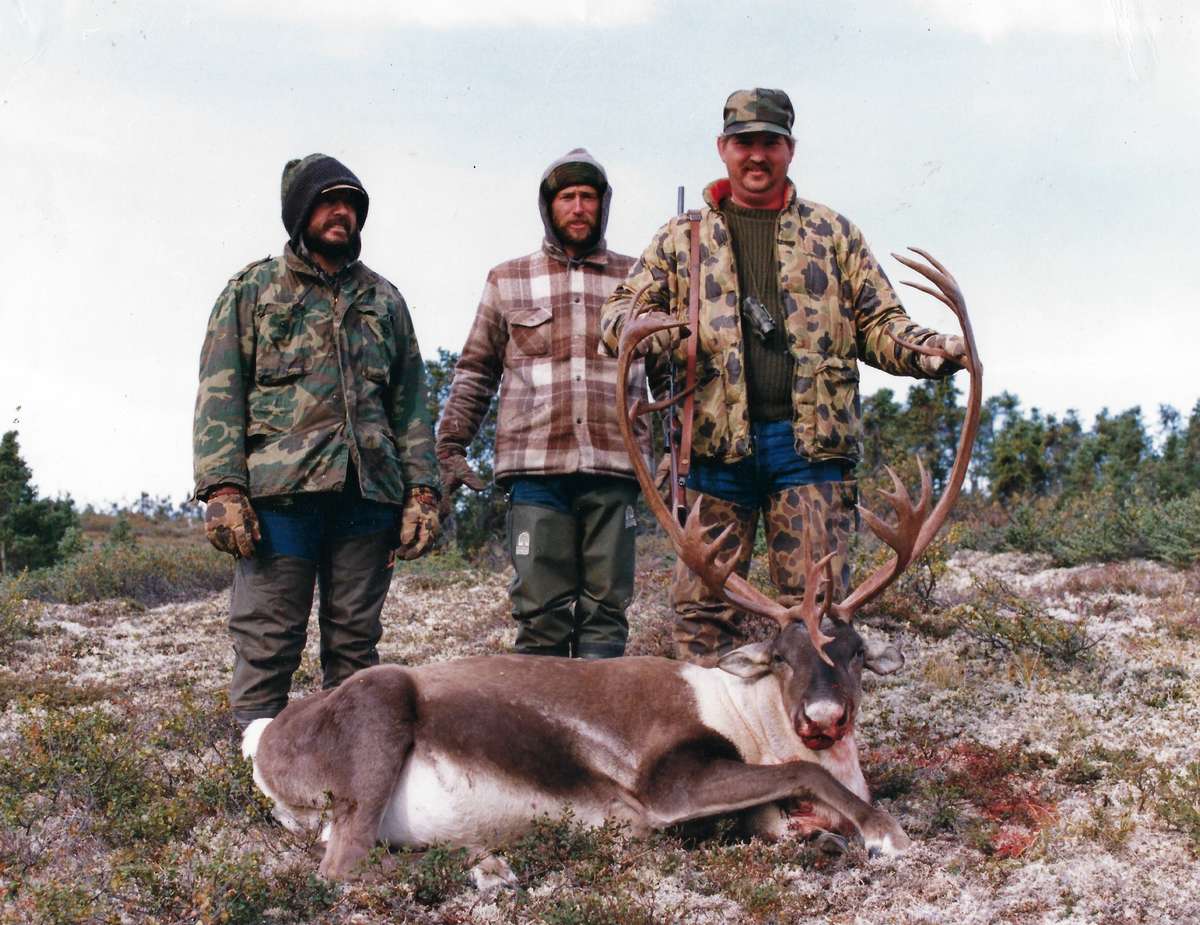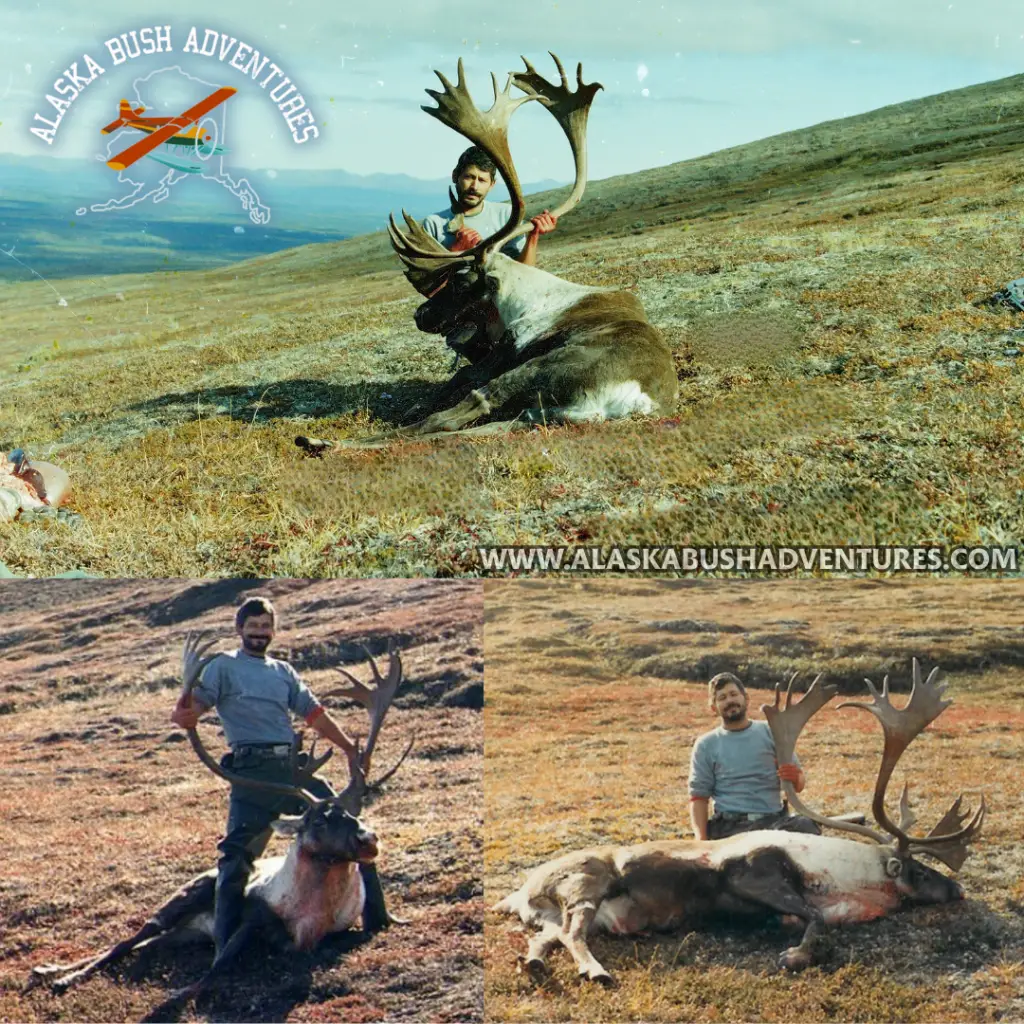Alaska Caribou Hunts
Alaska Caribou, Nomads of the North!
Alaskan Barren Ground Caribou.
Each year, Alaska Bush Adventures offers a limited number (2-3) of fully outfitted, unguided Barren Ground Caribou hunting trips, departing from Anchorage. These unique adventures require a minimum of two hunters per trip.
Our unguided Caribou hunts are fly-out spike camp experiences, taking place in the low rolling foothills on the Northwestern side of the majestic Alaska Range. We provide comprehensive outfitting, including a detailed “suggested personal gear list” and complete lists of all necessary equipment, supplies, food, and beverages.
To best prepare for your unguided Caribou hunt, we strongly recommend visiting our FAQ (Frequently Asked Questions) page on our website. There you’ll find these crucial lists, along with a wealth of other helpful information designed to ensure you’re fully prepared for your Alaska Bush Adventures experience.
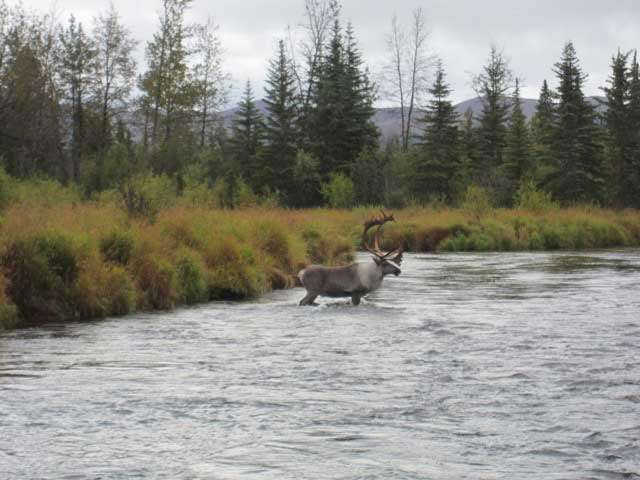
Our Caribou Hunting Philosophy: Unguided Success
While Alaska Bush Adventures offers fully guided hunts for Moose, Brown Bears, and Black Bears, our Caribou hunts are exclusively unguided and fully outfitted. Over the years, this approach has yielded remarkable success for our Caribou hunters, boasting a consistent 100% success rate.
We’ve found that the nature of Caribou hunting in our chosen areas often allows experienced hunters to enjoy a highly rewarding trip without the added expense of a guide. The Caribou herds’ movements and the open terrain lend themselves well to self-sufficient hunting strategies. We provide you with all the necessary equipment and logistical support for a successful and memorable Alaskan Caribou adventure.
Your Fully Outfitted Unguided Caribou Hunt: What We Provide
For your unguided Alaskan Caribou hunting trip, we take care of all the essential hunting and camping gear, along with a comprehensive supply of food and both hot and cold beverages – beyond just your personal items. You will receive a “Personal Suggested Equipment” list to help you pack appropriately, as well as an “Unguided Hunters Outfitted/Supplied Equipment/Gear” list detailing the camping and hunting equipment we provide. Both of these valuable lists can be found on our FAQ (Frequently Asked Questions) page. Our provided camping equipment includes durable, extreme weather tents designed to withstand Alaska’s fall conditions, sturdy pack frames for transporting gear, efficient two-burner cookstoves with ample fuel, bright LED lanterns for camp lighting, a full set of basic kitchen cooking and eating utensils, and various other necessary supplies. We ensure a thorough package of essential items to make your hunt comfortable and successful. You will receive detailed lists outlining the specific food items for your meals, the variety of hot and cold drinks available, and a separate list detailing all the provided camping and hunting equipment and supplies.
We prioritize quality in the food and drinks we supply, offering options very similar to what you would typically find in your own kitchen. In addition to standard pantry staples, we also provide a selection of nutritious and delicious Augason Farms freeze-dried meals and Mountain House Dinners. These are particularly convenient and satisfying after a long day of hunting in the Alaskan wilderness.
We recommend planning your trip around the end of August or early September, before the weather becomes significantly colder. Please note that Bull Caribou antlers will typically still be in velvet until after mid-August. Our flexible hunting dates generally range from August 8-15 to September 21, offering a 10-day timeframe for your hunt.
You will receive a comprehensive Itinerary outlining all logistical details from your arrival in Anchorage until your departure. We recommend an economically priced hotel conveniently located near the airport for your overnight stays in Anchorage. This hotel offers a large walk-in freezer for storing your harvested game and provides complimentary airport pickup upon your arrival and transportation to the flight service for your bush plane journey to and from the field.
Should you wish to donate any of your harvested meat, we can certainly take care of that for you. We can also provide information for local Meat Processors and an Expediting/Taxidermist Service if you require assistance with your trophies, including options for a finished Caribou mount for your home.
If you are interested in experiencing an unguided Caribou hunt with us, please call me, and I will be happy to discuss the logistics in detail and share more important and interesting points about these unique hunting trips.
The Barren Ground Caribou of Alaska are true nomads of the Far North, constantly migrating in search of fresh grazing lands. Their striking appearance, marked by massive, long, arching antlers and impressive white manes, makes them a remarkable sight and a sought-after trophy. Alaskan Caribou are primarily of the Barren Ground subspecies, with only a small Woodland Caribou herd in the Wrangell-St. Elias region. Importantly, Caribou populations are currently stable and increasing in the areas where we offer hunts, promising excellent opportunities for hunters to harvest a truly magnificent trophy.

Understanding Alaskan Caribou Behavior for a Successful Hunt
Calving areas for Alaskan Caribou are typically found in open alpine mountain meadows and similar terrain. Interestingly, Caribou often return to the same general calving areas year after year. However, their migration routes can be unpredictable; routes used for many seasons may be suddenly abandoned as the herds shift to new areas offering more abundant food sources.
Caribou movements can be triggered by various environmental factors, including the onset of cold weather or significant snowstorms. Unfortunately, decades of heavy hunting pressure and constant disturbance from low-flying airplanes operated by air charters scouting for hunter drop-off locations have also influenced their migration patterns. Once a migration begins, Alaskan Caribou are capable of traveling remarkable distances in a single day. Consequently, accessing larger Caribou herds now often necessitates venturing farther away from urban centers.
The majestic trophy Alaska Bull Caribou roams throughout the vast northern arctic tundra, expansive mountain tundra, and rugged alpine mountain ranges of Alaska. These magnificent animals are distributed across our state in over 30 distinct herds and ranges. As fall progresses, different Caribou herds may converge on shared ranges for the winter months. However, with the arrival of spring, these larger groups will disperse into smaller bands and journey to their traditional calving grounds, continuing the cycle of life for these nomadic creatures.
The Remarkable Adaptations of Alaskan Caribou
Alaskan Caribou possess large, uniquely concave hooves that spread widely, providing exceptional support as they navigate the diverse terrain of their environment, including snow, wet bogs, and soft tundra. These hooves also serve another vital purpose: Alaskan Caribou are strong and agile swimmers, and their feet function effectively as natural paddles when crossing rivers and lakes.
Interestingly, Caribou are the only members of the deer family in which both males (bulls) and females (cows) develop antlers. The antlers of mature bulls are typically large and massive, often displaying impressive size and intricate branching patterns. In contrast, the antlers of cows are generally a smaller, more slender, and irregularly shaped version of the bulls’ impressive racks.
As late fall approaches, a noticeable transformation occurs in the coloration of Alaska Bull Caribou. Their predominantly brown summer coat gradually changes to feature a striking white-necked mane, complemented by a whiter rump, white lower leg markings (leggings), and distinctive white stripes along their body sides. Adult bulls typically reach an average weight of 300 to 350 pounds or more, a testament to their robust build and the harsh environments they inhabit.
The calving season for Alaskan Caribou occurs from mid-to-late May in Interior Alaska to around early June in Northern and Southwestern regions. Following birth, Caribou gather in larger post-calving groups, a crucial strategy for protecting vulnerable calves from predators through increased vigilance and safety in numbers.
During the Alaskan summer, Caribou seek refuge in the cooler high mountains and around lingering snow packs. These elevated environments offer a natural defense against both the summer heat and the persistent annoyance of insects such as mosquitoes, gnats (including the “white socks” variety of black fly), and warble flies. The wind and cooler temperatures found at these higher altitudes provide a necessary respite.
As August brings cooler temperatures, the Caribou herds begin to disperse, shifting their focus to intensive feeding. They capitalize on the new growth of willow, grasses, sedges, and lichens (often called reindeer moss) to rapidly replenish their body weight and build vital fat reserves in preparation for the approaching winter.
The Caribou Rut: Antlers, Fat Reserves, and Migration
Around late August, the velvet that has been nourishing the Caribou antlers is shed, revealing a distinctive dark brown polish. This marks the approaching rutting season and the commencement of their significant fall migrations.
Mature bull Caribou have been diligently accumulating thick layers of fat on their backs and rumps. These vital fat reserves will provide the immense energy needed to sustain them through the demanding rutting period and the harsh winter months ahead. Sparring matches and more intense fighting among bulls typically begin in mid-to-late September, often coinciding with the onset of cooler temperatures.
The timing of antler shedding varies among Caribou. Mature bulls generally shed their antlers in late October or November. However, younger, smaller bulls and non-pregnant cows may retain their antlers until the early spring. Interestingly, pregnant female Caribou usually keep their antlers until they calve in late May or early June, a unique adaptation likely related to competition for limited resources during late winter and early spring.
Our Alaskan Caribou hunts offer an exciting, highly successful, and enjoyable experience in the remote Alaskan bush. Good physical fitness will enhance your trip. We recommend bringing a video camera to record your hunt and daily activities. You’ll also have the opportunity to enjoy excellent Sport Fishing for Rainbow Trout, Arctic Grayling, Dolly Varden, Burbot, and Northern Pike.

Unguided Alaskan Caribou Hunting Adventure
Fully Outfitted/Supplied Fly-Out Spike Camp Hunt:
10-Day Hunting Trip: $12,600 per person
Minimum: 2 hunters per trip
Included: No additional Air Charter fees
This exceptional unguided hunt offers the opportunity to pursue Barren Ground Caribou, Black Bear, Wolf, and Wolverine, along with excellent fishing.
Explore Our Other Alaskan Hunts:
We also offer guided hunts for Yukon Moose and other big game species. Please inquire for details.
Ready to Plan Your Alaskan Adventure?
Thank you,
Master Alaskan Guide/Outfitter Hugh Les Krank and Ryan L. Krank
Call us at 623-703-0130, or fill out our https://alaskabushadventures.com/contact/ and we’ll call you to make your Alaska hunt happen.
